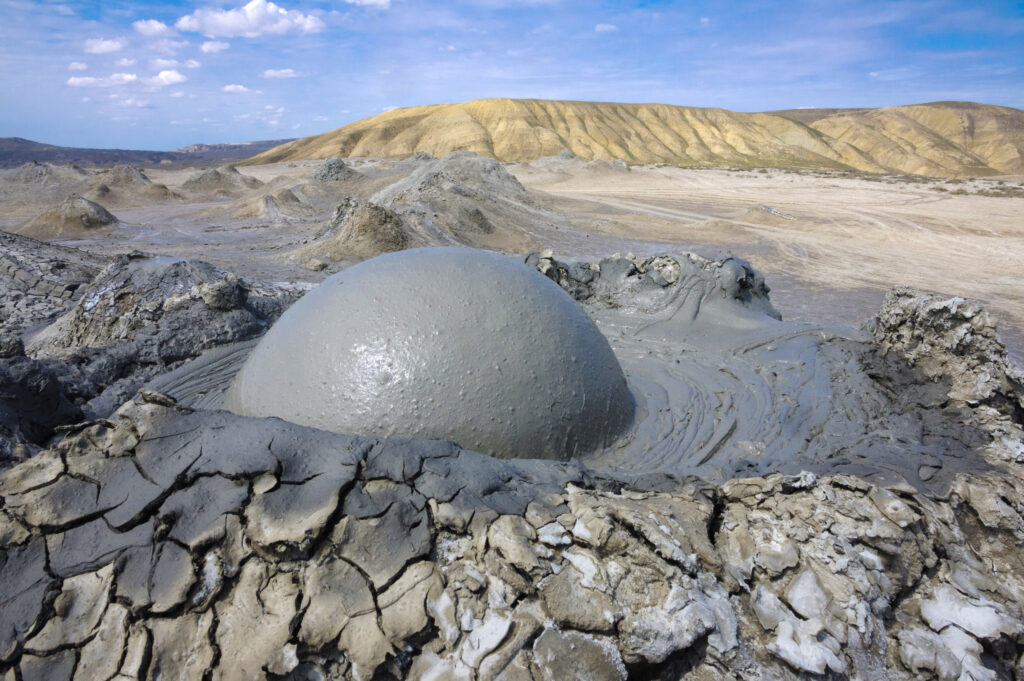Mud Volcanoes – A Unique and Thrilling Natural Phenomenon
Mud volcanoes are extraordinary natural phenomena that have captivated geologists, travellers, and nature lovers for centuries. These fascinating eruptions of mud, water, and gas occur in many parts of the world, including Azerbaijan, Italy, and the United States. In this article, we’ll take a closer look at what mud volcanoes are, how they’re formed, and why they’re so remarkable.
What are Mud Volcanoes?
Mud volcanoes are geological formations that occur when water, mud, and gas are forced upwards through a vent in the Earth’s crust. Unlike traditional volcanoes, mud volcanoes don’t spew out lava or molten rock. Instead, these unique geological features often release thick streams of mud and gas, creating a fascinating spectacle.
How are Mud Volcanoes Formed?
Mud volcanoes are formed when underground reservoirs of natural gas, water, and sediment become pressurized and are forced upwards through a vent in the Earth’s crust. The pressurized gases and mud form a dome-shaped structure that can reach heights of up to 30 metres.
What are the Different Types of Mud Volcanoes?
Mud volcanoes are typically classified into three distinct types:
- Active Mud Volcanoes: These are the most common type of mud volcano and are characterized by frequent eruptions of mud and gas.
- Dormant Mud Volcanoes: Dormant mud volcanoes no longer erupt, but they still contain pressurized reservoirs of gas and sediment, and may show signs of activity from time to time.
- Extinct Mud Volcanoes: Extinct mud volcanoes have been inactive for hundreds or thousands of years and no longer contain pressurized gas or sediment.
What is the Significance of Mud Volcanoes?
Mud volcanoes are important geological features for a number of reasons. For one, they provide valuable insight into how the Earth’s crust is formed and how geological processes work. Mud volcanoes are also important habitats for a variety of wildlife, including rare species of plants and animals.
Where Can You See Mud Volcanoes?
Mud volcanoes are found in many parts of the world, including Azerbaijan, Italy, and the United States. Azerbaijan, in particular, is home to some of the most impressive mud volcanoes in the world. The Gobustan National Park in Azerbaijan is home to over 300 mud volcanoes, some of which are over 5,000 years old.
Exploring Mud Volcanoes
Exploring mud volcanoes can be a thrilling and memorable experience. The best way to explore a mud volcano is to hike to the top and take in the spectacular views. Many mud volcanoes have trails leading to the summit, while others are accessible only by boat.
Conclusion
Mud volcanoes are extraordinary natural phenomena that have captivated geologists, travellers, and nature lovers for centuries. These unique formations are formed when pressurized water, mud, and gas are forced upwards through a vent in the Earth’s crust, creating a fascinating spectacle. Mud volcanoes are found in many parts of the world, including Azerbaijan, Italy, and the United States. Exploring mud volcanoes can be a thrilling and memorable experience, and the best way to do this is to hike to the top and take in the spectacular views.

